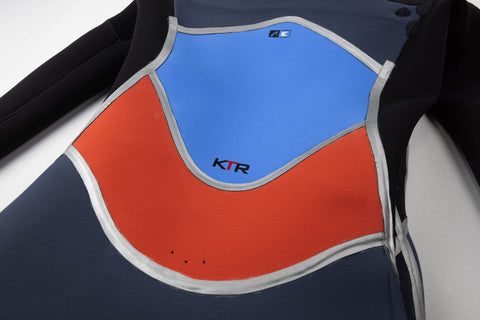Many wetsuits, especially the higher-end ones, feature internal linings made of synthetic fleece-like materials. These linings add extra insulation, a layer of comfort, and many dry faster than a regular nylon-lined neoprene. You’ll often find suits that boast quick dry times due to their lining, which allows you to enjoy multiple sessions in a day without putting on a cold and wet wetsuit. The downside of these linings is they also add weight and can reduce flexibility.
When considering if you want an internal lining, you will need to decide if you want a suit geared more towards flexibility or a suit geared more towards warmth. Many “comp” models do not feature these linings to make the suit as light and flexible as possible.
A Few Specific Linings by Manufacturer

Flashbomb Lining by Rip Curl

Recycled Polyester Jersey Lining by Patagonia

Firewall Lining by O’Neill

Graphene Recycler Lining by Billabong

WarmFlight Eco & Velvet Zoned Thermal Lining by Quiksilver

Fever Fiber Lining by Vissla

Thermal Lining by Buell

Titanium With Z-Fleece Lining by Isurus
How do internal wetsuit linings affect flexibility?
Generally, anytime you add an internal lining it’s going to hinder flexibility at least a little. This is why, a lot of the time, you don’t see the heavy-duty liners in the arms and shoulders where flexibility is key.
How do internal wetsuit linings affect warmth?
Internal linings can help a lot with warmth, but much of the warmth gains are perceived due to the suit being dry when you put it on. Still, graphene and certain other linings do help with the warmth of a suit as well, while some other liners don’t necessarily add to the real warmth of the suit.
How do internal wetsuit linings affect durability?
Internal linings generally don’t play a significant role in the durability of a wetsuit.
How do internal wetsuit linings affect fit?
Internal linings can, at times, contribute to a wetsuit being less flexible, especially with heavier-duty linings, thus making the fit a little bit tighter. Generally, you can assume an internal lining will not affect the fit of a wetsuit.
